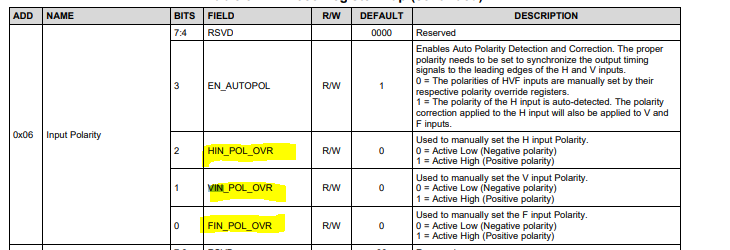Other Parts Discussed in Thread: LMH1981
Hi Team,
Would you advise below 4 questions from my customer?
1, Is it possible to do Genlock by applying F sync(Fin) sync signal only?
2, CLK out1 is used for 27MHz normally, but can I output 27MHz - 1000ppm(=26.973MHz)?
3, To what extent is the 27MHz VCXO XOin+ pin allowed to 27MHz±? Do you have specs?
4, If you have any know-how about how to use this IC (such as error behavior avoidance or
special characteristics), we would appreciate it if you could give us information.
Thanks
Best regards,
Shidara


